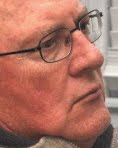
Fig. 1 shows a simplified block diagram of a full-bridge Class D amplifier. In the operation of the circuit Q1 – Q4 mosfets act as switches driven by an IC, U1, that provides pulse-width modulated signals (PWM ) to the switches. (See
Only one-half of the control circuit is shown. The switches Q1 and Q4 are turned on at the same time, and Q2 and Q3 are turned on at the same time, but not when Q1 and Q4 are on. The switching action alternately applies a pulse to one end of each inductor. The inductors and capacitors filter out the high frequency harmonic components of the square pulses that are applied. The audio signal is not filtered out because audio is in the pass band of the LC filters. The remaining audio signal is applied to the speaker to produce relatively noise free and low distortion sound, if the circuitry is properly designed.
A so-called half-bridge class D amplifier is similar, except that the right side filter with Q3 and Q4 are not used and the free terminal of the speaker is tied to power supply common. Note that a half-bridge amplifier will require the positive and negative power supplies to operate. The full-bridge circuit can be operated with only one supply voltage.
The mean signal value can be computed for a class d amplifier from the pulse duty cycle as
Vavg = Vhi * D + Vlow * (1-D)
where the duty cycle D is
D = Ton / T
Ton is the pulse on-time and T is the switching period. The switching frequency is the reciprocal of the period, or
Fsw = 1 / T
A so-called half-bridge class D amplifier is similar, except that the right side filter with Q3 and Q4 are not used and the free terminal of the speaker is tied to power supply common. Note that a half-bridge amplifier will require the positive and negative power supplies to operate. The full-bridge circuit can be operated with only one supply voltage.
The mean signal value can be computed for a class d amplifier from the pulse duty cycle as
Vavg = Vhi * D + Vlow * (1-D)
where the duty cycle D is
D = Ton / T
Ton is the pulse on-time and T is the switching period. The switching frequency is the reciprocal of the period, or
Fsw = 1 / T

No comments:
Post a Comment